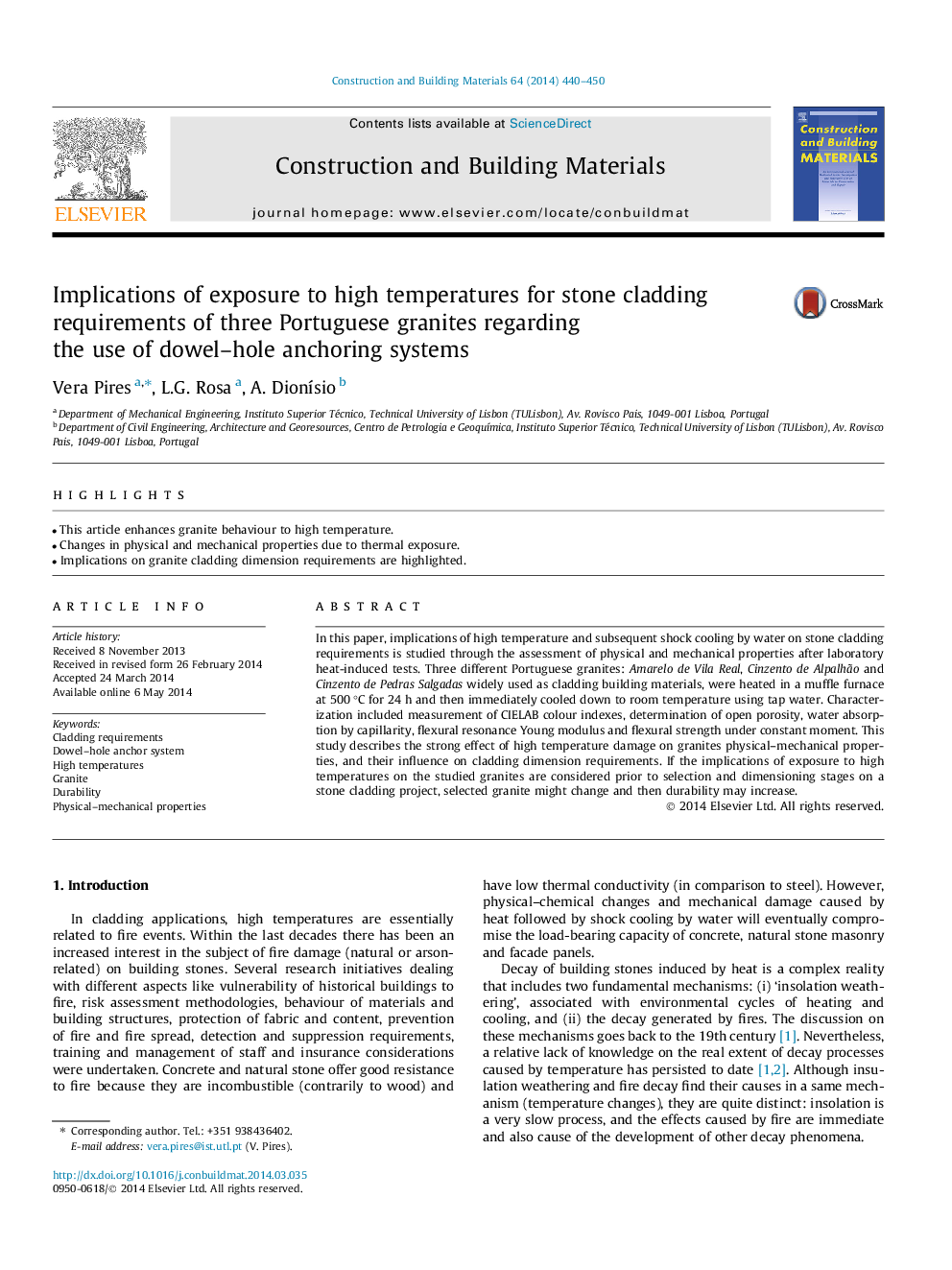| Article ID | Journal | Published Year | Pages | File Type |
|---|---|---|---|---|
| 257619 | Construction and Building Materials | 2014 | 11 Pages |
•This article enhances granite behaviour to high temperature.•Changes in physical and mechanical properties due to thermal exposure.•Implications on granite cladding dimension requirements are highlighted.
In this paper, implications of high temperature and subsequent shock cooling by water on stone cladding requirements is studied through the assessment of physical and mechanical properties after laboratory heat-induced tests. Three different Portuguese granites: Amarelo de Vila Real, Cinzento de Alpalhão and Cinzento de Pedras Salgadas widely used as cladding building materials, were heated in a muffle furnace at 500 °C for 24 h and then immediately cooled down to room temperature using tap water. Characterization included measurement of CIELAB colour indexes, determination of open porosity, water absorption by capillarity, flexural resonance Young modulus and flexural strength under constant moment. This study describes the strong effect of high temperature damage on granites physical–mechanical properties, and their influence on cladding dimension requirements. If the implications of exposure to high temperatures on the studied granites are considered prior to selection and dimensioning stages on a stone cladding project, selected granite might change and then durability may increase.
